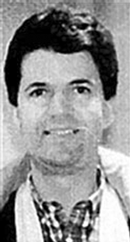NJ judge allows evidence from uncharged out-of-state murders into trial of alleged serial killer
Giving a boost to the government’s case, James N. Citta, a New Jersey Superior Court judge, allowed the Ocean County prosecutor to present evidence on two out-of-state murders at the trial of Richard W. Rogers, a gay man who is charged with the murders of Thomas R. Mulcahy, 57, and Anthony E. Marrero, 44.
Mulcahy’s remains were found in two locations in New Jersey in 1992. Marrero’s remains were found in New Jersey in 1993. The remains were in plastic garbage bags and both men had been carefully dismembered with a knife or a saw.
Rogers’ fingerprints were found on the bags holding the Mulcahy and Marrero remains. The bags and other items found with the remains were sold or used at stores on Staten Island where Rogers lived.
On September 29, Citta ruled that the prosecutor can introduce evidence in the killings of Michael Sakara, 55, whose remains were found in New York in 1993, and Peter Anderson, 54, whose body was found in Pennsylvania in 1991. Only Sakara had been dismembered though Anderson’s penis had been cut off and stuffed in his mouth.
Rogers’ fingerprints were found on the bags that held Anderson’s body, but not on the bags that held Sakara’s remains.
While Rogers, 55, has not been charged or even arrested in the Sakara and Anderson killings, the prosecutor argued that the other crimes were similar and evidence about them was needed “to give the jury a more complete picture of the defendant and his modus operandi.”
The prosecutor argued that all four were stabbed, had ligature marks, “were packaged similarly in plastic garbage bags,” had been “washed and contained almost no blood,” and that the dismemberments were “virtually identical.” The cause of death in all four cases was either stab wounds or a blow to the head.
The Associated Press reported that Citta noted that the manner in which the bodies were disposed was similar. “They are tantamount to signatures,” the AP quoted Citta saying at a hearing.
Citta excluded evidence on the killing of Matthew John Pierrot, 25, in 1982 in Florida. The prosecutor had originally sought to introduce evidence of a 1988 assault and false imprisonment case involving Rogers and a New York City gay man, but that effort was dropped. Rogers was acquitted in that case.
William J. Heisler, the executive assistant prosecutor in the Ocean County Prosecutor’s Office who is handling the case, said of the ruling “I thought it was important enough to try and get the evidence in… The two cases that I have here, the missing link is trying to connect my victims to Richard Rogers.”
Part of the problem with the case is that police do not know where the killings took place and, among the four men, only Sakara was seen with Rogers.
The witness who saw Sakara and Rogers together in a Greenwich Village bar just hours before Sakara’s body was found can link the two men. The witness, who knew both men, came forward only after Rogers’ 2001 arrest.
The investigation into the homicides was unsuccessful until 2000 when a 14-member task force, that included investigators from New Jersey and New York’s Rockland County, had the garbage bags that held the remains analyzed in a vacuum metal deposition chamber, a new technology that can find fingerprints on smooth or non-porous materials. The recovered fingerprints were sent to law enforcement agencies in all 50 states for comparison. In May of 2001, police in Maine matched Rogers’ fingerprints to those found on some of the bags and he was arrested. Rogers had been tried and acquitted in Maine in the 1973 murder of 22-year-old Frederic Spencer.
Presumably, the prosecutor will use the fingerprint evidence in three of the killings, the eye witness who saw Sakara and Rogers together, and the similarities among the Sakara, Mulcahy, Anderson, and Marrero murders to tie the Mulcahy and Marrero homicides to Rogers.
Heisler said it was “uncommon” to get judges to allow juries to hear evidence of uncharged crimes.
“There’s an evidence rule against it and that is pretty much universal,” Heisler said. “You can’t use it just to show that he’s a bad guy or has a propensity to commit a certain type of crime, but you can if it goes to prove his identity, goes to motive, goes to show a common plan or scheme.”
David A. Ruhnke, Rogers’ attorney, declined to comment on the ruling though he said admitting evidence of uncharged crimes was “common, very common actually,” but it is done under “fairly strict” guidelines.
“The theory here is that the murders are all so similar that they answer the question of who killed Mulcahy, who killed Marrero,” Ruhnke said.
Kimberly K. Ferzan, a law professor at Rutgers Law School in Camden, who is not involved in the case said “It actually happens all the time.” Judges are required to weigh the value of the evidence in proving the crime against its prejudicial effect on the jury, Ferzan said.
“A prosecutor is going to want to introduce all the evidence that they have,” Ferzan said. “You do that in strong case as well as in a weak case.”
Jury selection in the case will begin on October 18.
gaycitynews.com


































